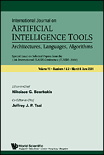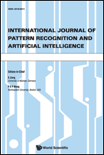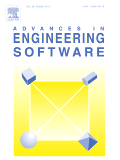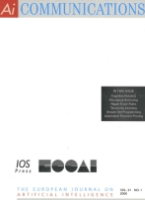
International Journal on Artificial Intelligence Tools
Scope & Guideline
Navigating AI Frontiers: Insights for Researchers and Practitioners
Introduction
Aims and Scopes
- Artificial Intelligence and Machine Learning Techniques:
The journal publishes research that explores new algorithms, models, and techniques in AI and machine learning, focusing on their applicability in real-world problems. - Interdisciplinary Applications of AI:
Research that integrates AI with other fields such as healthcare, finance, and environmental science is a core focus, showcasing how AI can solve complex interdisciplinary challenges. - Algorithm Optimization and Performance Evaluation:
The journal emphasizes studies that optimize existing algorithms or propose new ones, along with rigorous performance evaluations to assess their effectiveness in practical scenarios. - Explainable AI and Ethical Considerations:
A significant area of interest is the development of explainable AI systems and addressing ethical implications, ensuring that AI applications are transparent and fair. - Big Data and AI Integration:
Research that investigates the intersection of big data technologies and AI, focusing on methods for data processing, analysis, and the enhancement of AI capabilities through large datasets.
Trending and Emerging
- Hybrid Learning Models:
Recent studies highlight the rise of hybrid learning models that combine various AI techniques, such as deep learning and reinforcement learning, to enhance performance in complex tasks. - Domain Adaptation and Transfer Learning:
There is a growing focus on domain adaptation and transfer learning methods, particularly in applications where data availability is limited or where models need to generalize across different contexts. - Explainable and Trustworthy AI:
Research dedicated to ensuring AI systems are explainable and trustworthy is on the rise, addressing concerns around bias, transparency, and user trust in AI technologies. - AI in Healthcare and Medical Imaging:
The application of AI in healthcare, particularly in medical imaging and diagnostics, is increasingly prominent, showcasing the potential for AI to improve patient outcomes. - AI for Environmental and Agricultural Applications:
Emerging themes include the use of AI in addressing environmental issues and optimizing agricultural practices, indicating a growing commitment to sustainability through technology.
Declining or Waning
- Traditional Rule-Based Systems:
There is a noticeable decrease in publications focused on traditional rule-based AI systems, as researchers increasingly favor data-driven and machine learning approaches. - Basic Statistical Methods in AI:
Papers that solely rely on basic statistical methods for AI applications are becoming less frequent, as more sophisticated machine learning techniques gain traction. - Overly Theoretical Frameworks:
Research that focuses heavily on theoretical frameworks without practical applications is less common, as the journal shifts towards studies with tangible real-world applicability. - Single-Domain Applications:
There is a decline in research focused on AI applications limited to a single domain, with a growing interest in interdisciplinary approaches that combine insights from multiple fields. - Conventional Data Mining Techniques:
The emphasis on conventional data mining techniques is waning, as more innovative and integrated approaches using advanced AI methodologies are preferred.
Similar Journals

INTERNATIONAL JOURNAL OF PATTERN RECOGNITION AND ARTIFICIAL INTELLIGENCE
Exploring the Synergy of Pattern Recognition and AIINTERNATIONAL JOURNAL OF PATTERN RECOGNITION AND ARTIFICIAL INTELLIGENCE, published by WORLD SCIENTIFIC PUBL CO PTE LTD, is a prestigious academic journal established in 1995 that serves as a critical platform for disseminating innovative research in the rapidly evolving fields of artificial intelligence, pattern recognition, and computer vision. With a focus on advancing theoretical and applied methodologies, the journal aims to bridge the gap between research and practical applications, making it essential reading for researchers, professionals, and students alike. The journal holds strong rankings within its categories, placing it in the Q4 for Artificial Intelligence, Q3 for Computer Vision and Pattern Recognition, and Q3 for Software as of 2023. Despite its growing influence, it continues to provide a rich resource for studies at the intersection of machine learning and computer science. The INTERNATIONAL JOURNAL OF PATTERN RECOGNITION AND ARTIFICIAL INTELLIGENCE not only contributes to academic discourse but also acts as a catalyst for technological advancement, making a significant impact on the scientific community.

Scalable Computing-Practice and Experience
Bridging Theory and Practice in ComputingScalable Computing - Practice and Experience, published by UNIV VEST TIMISOARA, stands as a significant platform for research and discourse in the realm of computer science, particularly focusing on practical applications and scalability in computing systems. Established in 2005, it aims to bridge the gap between theoretical advancements and real-world implementations, catering to a diverse readership that includes researchers, professionals, and students who are keen on exploring innovative computing practices. With an H-index reflective of its contribution and a Category Quartile of Q3 in Computer Science (miscellaneous), the journal offers a rich repository of knowledge, albeit currently not open access, from its base in Timisoara, Romania. The journal is included in Scopus rankings, underscoring its relevancy with a current rank of #144 out of 232 in the General Computer Science category, placing it in the 38th percentile. It invites contributions that expand the horizons of scalable computing methodologies and experiences, making it a vital resource for those engaged in this rapidly evolving field.

JOURNAL OF UNIVERSAL COMPUTER SCIENCE
Exploring the boundaries of theoretical and applied computing.JOURNAL OF UNIVERSAL COMPUTER SCIENCE, published by Graz University of Technology's Institute for Information Systems and Computer Media (IICM), stands as a pivotal resource in the field of computer science. Since its inception in 1994, this Open Access Journal has fostered a culture of knowledge sharing and collaboration, allowing readers from all corners of the globe to access cutting-edge research without barriers. With an impressive convergence of studies spanning from 1996 to 2024, the journal covers a breadth of topics within Computer Science, achieving a Q3 ranking in miscellaneous areas and a Q4 ranking in theoretical computer science as of 2023. It also holds significant standing in Scopus rankings, demonstrating its influence and reach among the scientific community. The journal is particularly valuable to researchers, professionals, and students eager to explore innovative ideas and techniques that push the boundaries of computer science. Based in Austria, the journal is dedicated to maintaining high standards of scholarly integrity while promoting interdisciplinary discourse and advancements in technology.

ADVANCES IN ENGINEERING SOFTWARE
Elevating Engineering Practices through Software Innovations.ADVANCES IN ENGINEERING SOFTWARE, published by Elsevier Science Ltd, stands at the forefront of interdisciplinary research in the realms of engineering and software development. With an impressive impact factor reflected in its Q1 and Q2 rankings in the Engineering (Miscellaneous) and Software categories, respectively, this journal serves as an essential platform for researchers and practitioners alike to disseminate innovative findings and methodologies from 1982 to the present. Strategically positioned within the United Kingdom, it engages scholars, professionals, and students by publishing high-quality articles that emphasize advancements in software applications related to engineering challenges. Although it does not currently offer open access, the journal remains highly regarded within the academic community, consistently attracting impactful research and maintaining a commendable Scopus ranking within the top tiers of both general engineering and software disciplines. Explore the latest contributions to enhance your knowledge and stay updated on trailblazing developments in engineering software.

NEURAL COMPUTING & APPLICATIONS
Charting New Territories in Neural Computing ResearchNEURAL COMPUTING & APPLICATIONS is a premier journal dedicated to the burgeoning fields of Artificial Intelligence and Software Engineering, published by Springer London Ltd. Established in 1993, the journal serves as a pivotal platform for disseminating cutting-edge research and innovative applications in neural computing, covering a broad range of topics from algorithm development to real-world applications. With its impressive categorization in the 2023 Journal Quartiles—ranging Q2 in Artificial Intelligence and Q1 in Software—it stands out in its discipline, ranking 42nd out of 407 in Computer Science Software and 50th out of 350 in Computer Science Artificial Intelligence, reflecting its significant impact in the academic community. Although not an open access journal, it provides vital access to significant findings and methodologies that drive advancements in technology. Researchers, professionals, and students looking to stay abreast of the most relevant and impactful developments in these fields will find NEURAL COMPUTING & APPLICATIONS an indispensable resource.

JOURNAL OF MACHINE LEARNING RESEARCH
Pioneering Insights in Artificial Intelligence and BeyondJOURNAL OF MACHINE LEARNING RESEARCH, published by MICROTOME PUBL, stands as a premier journal in the realms of Artificial Intelligence, Control and Systems Engineering, Software, and Statistics and Probability. With an impressive Q1 ranking across multiple categories and a prominent Scopus ranking that places it among the top journals in its field—ranked 1st in Mathematics and 20th in both Artificial Intelligence and Software—this journal serves as a vital resource for cutting-edge research and advancements in machine learning. Established in 2001, it has been committed to disseminating high-quality research findings and innovative methodologies, addressing the evolving challenges and opportunities in machine learning. Furthermore, the journal maintains a rigorous peer-review process, ensuring that only the most significant contributions are published. With open access options available and a strong user-friendly platform, it invites researchers, professionals, and students to engage deeply with the pioneering work in the field.

AI COMMUNICATIONS
Transforming Insights into AI Innovations.AI COMMUNICATIONS is a distinguished journal published by IOS PRESS, focusing on the dynamic field of Artificial Intelligence. With a rich history dating back to 1987, this journal covers a broad spectrum of topics, including the latest advancements in AI methodologies, applications, and implications for society. Despite holding a Q3 classification in the 2023 category of Artificial Intelligence, it provides an essential platform for dialogue and dissemination of research, highlighted by its global accessibility in the realm of AI communications. Researchers, professionals, and students alike will find a wealth of knowledge within its pages, which aim to bridge the gap between cutting-edge research and practical applications in AI. By contributing to this journal, authors have the potential to engage with a diverse audience and impact the ongoing discourse surrounding artificial intelligence technologies.

Kunstliche Intelligenz
Unveiling the Next Wave of AI DiscoveriesKünstliche Intelligenz is a premier journal dedicated to the field of Artificial Intelligence, published by Springer Heidelberg in Switzerland. With an ISSN of 0933-1875 and an E-ISSN of 1610-1987, this journal serves as a vital platform for the dissemination of cutting-edge research and innovations in AI. Recognized within the Scopus ranking as #78 out of 350 in the category of Computer Science _ Artificial Intelligence, it holds a significant place within the academic community, reflecting a 77th percentile standing in its field. The journal operates in a traditional publishing model, offering a comprehensive scope that spans major advancements and theoretical explorations in AI from 2010 to 2024. As a Q3 journal within its category for 2023, Künstliche Intelligenz is poised to foster critical dialogue and collaboration among researchers, practitioners, and students, making it an essential resource for anyone looking to stay abreast of the transformative developments in artificial intelligence.

Progress in Artificial Intelligence
Fostering Collaboration for AI ExcellenceProgress in Artificial Intelligence is a leading journal published by SpringerNature, dedicated to advancing knowledge and research in the field of artificial intelligence. With a strong emphasis on the latest developments from 2012 through 2024, this journal enjoys a prominent position, holding a Q2 ranking in the prestigious Artificial Intelligence category for 2023, as well as achieving an impressive ranking of 64 out of 350 in the Computer Science - Artificial Intelligence category on Scopus, placing it in the 81st percentile. Progress in Artificial Intelligence serves as an essential platform for researchers, professionals, and students seeking to share innovative algorithms, applications, and theoretical advancements. Although it operates under a subscription model, its commitment to disseminating high-quality research and fostering collaboration in the AI community significantly contributes to the ongoing evolution of this exciting discipline.

Frontiers in Artificial Intelligence
Bridging Disciplines in the AI LandscapeFrontiers in Artificial Intelligence, published by FRONTIERS MEDIA SA, is a pioneering open-access journal that commenced in 2018, dedicated to advancing the multifaceted field of artificial intelligence. With an impressive Q2 ranking in the category of Artificial Intelligence, it occupies a significant position within the academic community, offering a platform for high-quality, peer-reviewed research. The journal's comprehensive scope encompasses a variety of subfields, including machine learning, robotics, and human-computer interaction, making it an invaluable resource for researchers, professionals, and students alike. As an open-access journal since 2019, it ensures that cutting-edge research is readily available to a global audience, facilitating knowledge sharing and collaboration. With its headquarters in Switzerland and a commitment to scholarly excellence, Frontiers in Artificial Intelligence is at the forefront of the scientific discourse, empowering the next generation of innovations in AI.